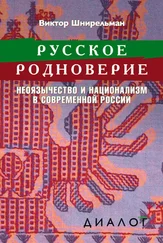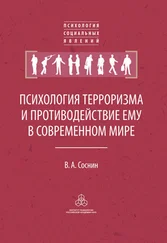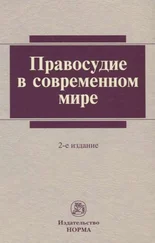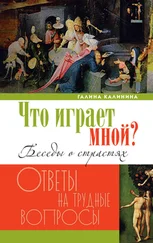Pandey, G. 1993. Which of us are Hindu // G. Pandey (ed.). Hindus and others – the question of identity in India today. New Delhi: Viking.
Panikkar, K. N. 2004. In the name of nationalism // Front Line, 16 March ( http://www.countercurrents.org/comm-panikker160304.htm).
Phelps, Reginald H. 1963. “Before Hitler came”: Thule society and Germanen Orden // Journal of Modern History, vol. 35, no. 3: 245–261.
Poewe, Karla O. 2006. New religions and the Nazis. N. Y.: Routledge.
Poliakov, Leon 1974. The Aryan Myth. London: Basic Books.
Poliakov, Leon 1985. The History of anti-Semitism. Vol. 4. Suicidal Europe, 1870–1933. Oxford: Oxford University Press.
Pollock, Sheldon 1993. Deep Orientalism? Notes on Sanskrit and power beyond the Raj // C. A. Breckenridge, P. Van der Veer (eds.). Orientalism and the postcolonial predicament: perspectives on South Asia, p. 76 – 133. Philadelphia: University of Pennslvania Press.
Popov, Igor 2001. The New Barbarians // Fortean Times, August.
Quinn, Malcolm 1994. The swastika. Constructing the symbol. London and New York: Routledge.
Rahman, T. 1996. Languages of the Proto-Historic Indus Valley // The Mankind Quarterly, vol. 36, no. 3–4: 221–246.
Rajaram, N. S. 1993. Aryan invasion of India: the myth and truth. New Delhi: Voice of India.
Rajaram N. S., Frawley D. 1994. Vedic Aryans and the origins of civilization: a literary and scientific perspective. Ottawa and New Delhi: World Heritage Press.
Ram, Hoggay 2000. The immemorial Iranian nation? School textbooks and historical memory in post-revolutionary Iran // Nations and nationalism, vol. 6, no. 1: 67–90.
Ramaswami, S. 2001. Remains of the race: archaeology, nationalism and the yearning for civilization in the Indus valley // Indian economic and social history review, vol. 38, no. 2: 105–145.
Rao, Nandini 1994. Interpreting silences: symbol and history in the case of Ram Janmabhoomi / Babri Masjid // G. C. Bond and A. Gilliam (eds.). The social construction of the past: representation as power, p. 154–164. London: Routledge.
Rao, S. R. 1973. The Indus script – methodology and language // D. P. Agraval, A. Ghosh (eds.). Radiocarbon and Indian archaeology, p. 323–340. Bombay: Tata Institute of Fundamental Research.
Rao, S. R. 1979. Deciphering the Indian script // Indian and Foreign Review, vol. 17, no. 3: 13–18.
Rao, S. R. 1984. New light on Indus script and language // B. B. Lal, S. P. Gupta (eds.). Frontiers of the Indus civilization, p. 193–199. New Delhi.
Ratnagar, Sh. 2004. Archaeology at the heart of a political confrontation: the case of Ayodhya // Current Anthropology, vol. 45, no. 2: 239–249.
Ratnagar, Sh. 2007. The Aryan homeland debate in India // Ph. L. Kohl, M. Kozelsky, and N. Ben-Yehuda (eds.). Selective remembrance: archaeology in the construction, commemoration, and consecration of national pasts, p. 349–378. Chicago: Chicago University Press.
Renatus, Q. F. 1922. Svastika // Narodni Politika, r. 40, no. 337.
Reznik, Semen 1996. The Nazification of Russia: anti-Semitism in the post-Soviet era. Washington, D. C.: Challenge Publications.
Riasanovsky, N. V. 1952. Russia and the West in the teaching of the Slavophiles. Cambridge, Mass.: Harvard University Press.
Ringel, F. 1994. New England Neo-Pagans: medievalism, fantasy, religion // Journal of American culture, vol. 17, no. 3: 65–68.
Rollin, Henri 1939. L’Apocalypse de notre temps. Paris: Gallimard.
Rome Spechler, Dina 1990. Russian nationalism and Soviet politics // Lubomir Hajda, Mark Beissiger (eds.). The nationalities factor in Soviet politics and society, p. 281–304. Boulder: Westview.
Rose, P. L. 1992. Wagner: race and revolution. New Haven: Yale Univ. Press.
Rosenberg, Alfred 1930. Der Mythus des 20 Jahrhunderts. München: Hoheneichen Verlag.
Rosenthal, Bernice G. 1997. Political implications of the early twentieth-century occult revival // B. G. Rosenthal (ed.). The Occult in Russian and Soviet culture, p. 379–418. Ithaca and London: Cornell Univ. Press.
Saint-Yves d’Alveydre, Alexandre 1884. Mission des Juifs. Paris: Calmann Lévy.
Sarda, H. B. 1975. Hindu superiority – an attempt to determine the position of the Hindu race in the scale of nations. New Delhi.
Savarkar, V. D. 1969. Hindutva: who is Hindu? Bombay: S. S. Savarkar.
Schnapp, Alain 1977. Archéologie et nazisme // Quaderni di Storia, vol. 3, no. 5: 1 – 26.
See, Klaus von 2006. Ideologie und Philologie. Aufsätze zur Kulture– und Wissenschaftsgeschuchte. Heidelberg: Universitätsverlag Winter.
Sertima, Ian van. 1985. Editorial // Journal of African Civilizations, April, vol. 7, no. 1: 7 – 12.
Sethna, K. D. 1992. The problem of Aryan origins: from an Indian point of view. New Delhi: Aditya Prakashan.
Sharma, R. S. 1978. In defense of “Ancient India”. New Delhi: People’s Publishing House.
Sharma, R. S. 1993. The Aryan problem and the horse // Social Scientist, vol. 21, no. 7–8: 3 – 16.
Sharma, A. 1995. The Aryan question: some general considerations // G. Erdosy (ed.). The Indo-Aryans of Ancient South Asia: language, material culture and ethnicity, p. 177–191. Berlin: Walter de Gruyter.
Sharma, D. 2000. Science, culture and conflict in India // Cultural Dinamics, vol. 12, no. 2: 164–181.
Shavit, Yacov 2001. History in black. African-Americans in search of an ancient past. London: Frank Cass.
Sheehan, Th. 1981. Myth and violence: the Fascism of Julius Evola and Alain de Benoist // Social Research, vol. 48, no. 1: 45–73.
Shenfield, Stephen D. 2001. Russian fascism: traditions, tendencies, movements. Armonk, New York: M. E. Sharp.
Shnirelman, V. A. 1995. From internationalism to nationalism: forgotten pages of Soviet archaeology in the 1930s and 1940s // Ph. Kohl & C. Fawcett (eds.). Nationalism, politics and the practice of archaeology, pp. 120–138. Cambridge: Cambridge University Press.
Shnirelman, V. A. 1996a. Who gets the past? Competition for ancestors among non-Russian intellectuals in Russia. Washington, D. C. and Baltimore: Woodrow Wilson Center Press, Johns Hopkins University Press.
Shnirelman, V. A. 1996b. The faces of nationalist archaeology in Russia // M. Diaz-Andreu & T. C. Champion (eds.). Nationalism and archaeology in Europe, p. 218–242. London: UCL Press.
Shnirelman, V. A. 1998a. Russian Neo-pagan Myths and Antisemitism. Jerusalem: The Hebrew University.
Shnirelman, V. A. 1998b. Archaeology and ethnic politics: the discovery of Arkaim // Museum International, no. 198 (vol. 50, no. 2): 33–39.
Shnirelman, V. A. 1999. Passions about Arkaim: Russian Nationalism, the Aryans, and the Politics of Archaeology // Inner Asia, vol. 1, no. 2: 267–282.
Shnirelman, Victor A., 2002. The Myth of the Khazars and Intellectual Antisemitism in Russia, 1970s – 1990s. Jerusalem: Vidal Sassoon International Center for the Study of Antisemitism, The Hebrew University of Jerusalem.
Silberman, N. A. 1989. Between past and present. Archaeology, ideology, and nationalism in the modern Middle East. N. Y.: Anchor Books.
Skurlatov, V. 1982. A Code of Morals // S. F. Cohen (ed.). An end of silence. Uncensored opinion in the Soviet Union, p. 171–174. N. Y.: W. W. Norton.
Slapšak, B. 1993. Archaeology and the contemporary myths of the past // Journal of European Archaeology, vol. 1, no. 2: 191–195.
Slezkine, Yuri 1994. Arctic mirrors. Russia and the small peoples of the North. Ithaca and London: Cornell Univ. Press.
Smith, Anthony D. 1984. National identity and myths of ethnic descent // Research in social movements, conflict and change, v. 7: 95 – 130.
Solomos, J. and Back L. 1996. Racism and society. London: MacMillan Press.
Spear, P. 1961. India. A modern history. Ann Arbor: The University of Michigan Press.
Читать дальше
Конец ознакомительного отрывка
Купить книгу

![Евгений Примаков - Россия в современном мире. Прошлое, настоящее, будущее [сборник]](/books/27003/evgenij-primakov-rossiya-v-sovremennom-mire-proshlo-thumb.webp)








